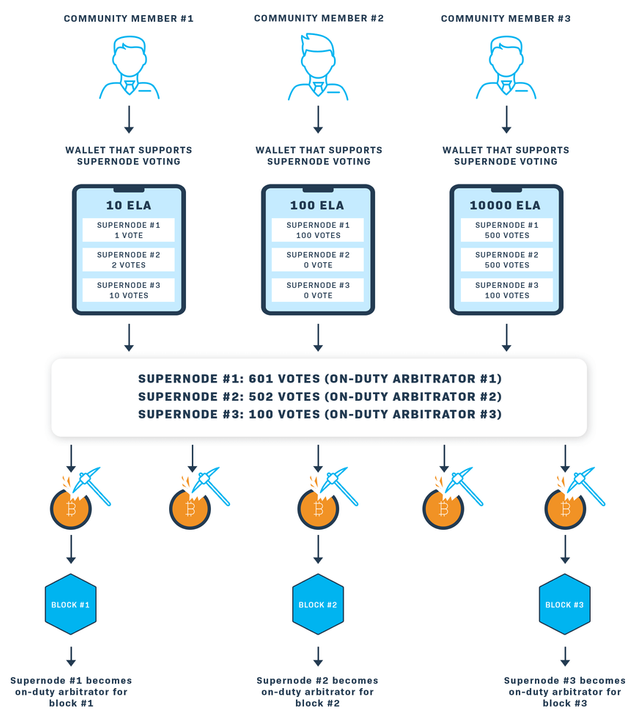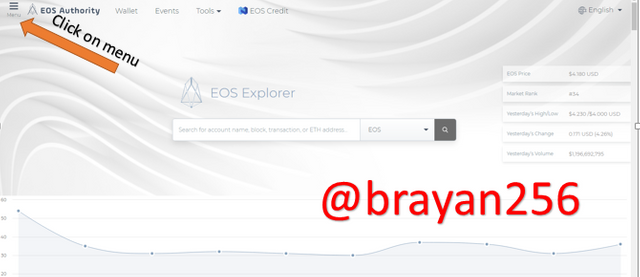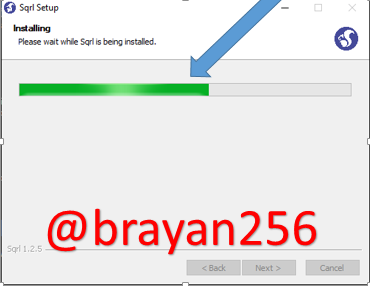Steemit Crypto Academy | Season 3 | Week 6 - Homework Post For Professor @pelon53
Hello professor @pelon53, I am grateful to be part of your lecture about Blockchain EOS and I present to you my homework task that you provided to the steemians after the lecture.
Explain the Delegated Proof of Stake, DPoS algorithm.
The delegated proof of stake is a cryptocurrency concord algorithm that was invented in 2014 by American cryptocurrency entrepreneur and software developer Daniel Larimer. The DPoS system is maintained from an election process where current holders vote for delegates who are then responsible for validating new blocks. It’s considered by many to be a more efficient and democratic version of the proceeding proof of stake algorithm and they are both used as an alternative to the energy-intensive proof of work algorithm such as the one used by Bitcoin.

How it works.
The delegated proof of stake is depicted as an application of online self-government. Depending on the DPos network consensus rules, a fixed number of delegates from 21 to 101 voted by the stakeholders of the network. These delegates who are also well known as witnesses then authenticate transactions and get rewarded for casting up blocks to the blockchain. Each stakeholder gets a number of votes proportional to the number of coins they own. On the other hand, they can select to delegate their stake to another stakeholder on the network who will then vote on their benefit. Under normal conditions, delegates take turns producing blocks usually every few seconds. Each delegate is scheduled for a specific time frame. Delegates who misbehave or constantly fail to produce a block will lose their reputation and will also be expelled and replaced by another delegate. Depending on the DPoS implementation, some systems may require delegates to deposit a certain amount of funds as a stake to show their commitment. These funds are kept in reserve and will be confiscated if the delegates act maliciously. In case of malicious or malfunctioning activity, the general rule is that the longer chain always wins, and anytime the delegates notice a valid strictly longer chain, they will switch from their current fork to the longer one.
Delegated proof of stake can be implemented in numerous different ways. Compared to the proof of work algorithm, DPoS offers higher performance and a more energy-efficient solution by removing the intense mining competition which also promotes decentralization since anyone can become a delegate and no large mining pools are needed to validate the blocks.
Explain what are Ricardian contracts on the EOS Blockchain?
In 1996, Ian Grigg pioneered the Ricardian contract, a general term used to describe a method of documenting a contract at law and connecting it securely to other systems. This functionality was proposed in the late 1990s in a paper that Ian Grigg published and it was titled “Financial Cryptography in 7 Layers”. The semantics of a Ricardian contract can be divided into two types, for instance, operational semantics that refers to the actual execution, correctness, and safety of the contract, and denotational semantics which is concerned with the real-world meaning of the full contract.
Ricardian contract majorly has three characteristics which include;
Identificatification:
This contract is identified by using a cryptographic hash function to let you know that the contract has not been modified and also uses a private key to identify the person executing the contract and connect the contract to a certain object or value.
Transparency:
Transparency is achieved through the fact that there is a readable text for legal prose as the actual contract, that is to say, it is part Ricardian Contract since a smart contract is a code that is implementing some contractual agreement. Here, there is the availability of the actual contract and the whole contractual agreement is in there.
Efficiency:
There is also a markup language functionality that gives the ability to quickly move around to locate and extract essential information within the body of this human-readable code.
Properties and capabilities.
Explore the official EOSREX interface (eosauthority.com). Show screenshots.





Download the SQRL wallet, explore and explain how to obtain CPU, RAM, and Network. Show screenshot.















How to obtain CPU.


How to obtain RAM.


Show the price of the REX token. And explain what it is used for.

REX is a resource exchange on EOS, that is to say, it is a marketplace to allow risk-free leasing of network resources, CPU, and NET which aid to successfully make transactions on the EOS network. REX is accessible by staking or allocating a portion of EOS tokens to CPU and NET and the more you transact on the network, the more EOS you need to have staked for resources. If you don’t have enough EOS to stake for the required network usage, you can borrow the necessary resources on REX for a fraction of the cost of owning them.
For those who have more EOS in their usage demands, REX is an opportunity to earn additional EOS and when you lend your EOS into REX, you receive REX tokens. As fees accumulate into the REX pool from CPU and NET loans, premium name bids, and RAM purchases, the value of your REX token increases to net you more EOS at the end of the loan. REX grants decentralized applications and participants to lease network bandwidth and CPU for a fragment of the capital cost of possessing and will stir up the adoption of the EOS. Token holders can lend EOS to REX by purchasing REX tokens and to lend EOS to REX, you must have also staked and voted for 21 block producers. You can lend as much EOS as you want to REX but you must wait at least 4 days for your loan to be processed before you can withdraw your EOS and the longer you hold the loan, the more you can earn.
Gracias por participar en Steemit Crypto Academy Season 3:
Espero seguir leyendo tus publicaciones.
Recomendaciones:
Redactar con párrafos más cortos.
Es importante justificar el texto y hacer tus conclusiones finales de lo aprendido.
Calificación: 8.3
You have been curated by @yohan2on, a country representative (Uganda). We are curating using the steemcurator04 curator account to support steemians in Africa.
Keep creating good content on Steemit.
Always follow @ steemitblog for updates on steemit